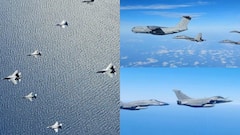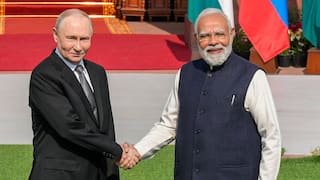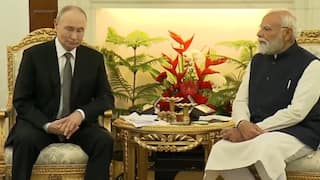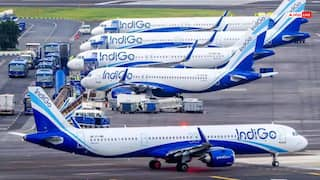With Own Anti-Missile, India Has Joined Select League Of Nations. Here's A Look At India’s BMD Programme
Though India is a latecomer in this interceptor missile race, it has still joined a select league of nations like the US, Russia and Israel that have deployed such systems.

With the successful maiden flight test of the second phase of the ballistic missile defence (BMD) interceptor on November 2 from the APJ Abdul Kalam Island off the coast of Odisha, India has achieved a major milestone in the ultimate deployment of the indigenously developed anti-missile system, which is capable of targeting and neutralising an incoming long-range intercontinental ballistic missile (ICBM) fired by the enemy. The necessity to acquire such an anti-missile system was felt after the 1999 Kargil War, when Pakistan threatened India with its nuclear tipped intermediate range missiles, and also to tackle perceived threats from China, which possesses hundreds of such ICBMs and has also deployed them in the Tibet area directed against Indian cities.
On October 14, India stunned the world with the successful launch of submarine launched ballistic missile K-15, but developing an anti-missile system is much more complex than an offensive missile system and requires very advanced expertise in cutting-edge defence technologies. DRDO utilised the available talent in India and could achieve the feat indigenously.
In spite of various strict international sanction regimes, especially directed against India, Indian missile scientists were able to equip the country’s armed forces with short, intermediate and long-range ballistic missiles ranging from Prithvi of 300-km range to the intercontinental ballistic missiles of Agni series with a range of over 5,000 km. However, since India is surrounded by inimical forces, who have also acquired offensive missile systems, it was imperative for Indian strategic planners to hand over such defensive systems to the armed forces, which can destroy an incoming attacking missile high in the sky. This will save the nation from nuclear blackmail.
With technology sanctions regimes like the Missile Technology Control Regime (MTCR) in operation, India could not have availed any assistance even from friendly countries like Russia in developing very advanced missile defence systems. Hence, Indian missile scientists chalked out their own anti-missile development programme.
The ambitious missile defence programme was launched in 2000 and since then many successful tests under Phase-1 of the BMD had been conducted, giving confidence to the scientists to go ahead with much more complex longer-range anti-missile systems.
#DRDOUpdates | DRDO conducts successful maiden flight-test of Phase-II Ballistic Missile Defence interceptor off Odisha coast@PMOIndia @DefenceMinIndia @SpokespersonMoD https://t.co/R8ZYoCyMZ8 pic.twitter.com/hHYOvYNinz
— DRDO (@DRDO_India) November 2, 2022
Origin Of Anti-Missile Systems And How AD-1 Works
According to a defence ministry official, the November 2 flight test was carried out with the participation of all BMD weapon system elements located at different geographical locations. Named Air Defence-1 (AD-1), the missile is a long-range interceptor missile designed for both the low exo-atmospheric and endo-atmospheric interception of long range ballistic missiles as well as fighter aircraft. The AD-1 is propelled by a two-stage solid motor and equipped with indigenously developed advanced control systems, navigation and guidance algorithm to precisely guide the vehicle to the target.
Defence Minister Rajnath Singh described AD-1 as a unique interceptor with advanced technologies available with very few nations in the world. According to DRDO Chairman Dr SV Kamat, AD-1 will provide great operational flexibility to the users and have capability to engage many different types of targets.
Anti-missile systems appeared on the war front for the first time during the Gulf War in the early nineties when US forces deployed Patriot missile systems to destroy Iraqi Scud missiles. Later, the US released other much more advanced versions of Patriot, Aegis and THAAD (Terminal High Altitude Area Defence) systems. THAAD came under spotlight when the US decided to deploy them on the Polish borders with Russia and in South Korea to counter North Korean missiles. Russia and China had objected to the deployment of THAAD on their borders. Similarly, Pakistan has also expressed concerns over the Indian anti-missile development programme, as it would make Pakistani ballistic missiles infructuous.
Though Indian missile scientists have successfully completed Phase-1 of the anti-missile development programme, the armed forces had to wait for the completion of the final phase of the BMD programme, in view of the magnanimity of the threats faced. Under Phase 1, the interceptors had a limited range of 15 km to 80-100 km, and would have been able to tackle only intermediate range ballistic missiles, whereas India also faces a huge threat from long-range intercontinental ballistic missiles. Hence, until the development and deployment of such indigenous anti-missile systems, Indian policymakers decided to acquire the Russian S-400 anti-missile system, for which India had to spend a huge sum of over US$ 5 billion so as to deter the adversaries from threatening India with missile attacks.
However, Indian officials believe that the results of the November 2 test are very encouraging and have generated confidence among policy planners to issue green signal for further tests and final sealing of the design. Indian officials also believe that India would no longer need to import such a system. The new interceptor will require a few more tests to validate various design parameters, after which the Phase-2 interceptor missile is expected to begin production for actual deployment within the next few years.
Though India is a latecomer in this interceptor missile race, it has still joined a select league of nations like the US, Russia and Israel that have deployed such systems. Though a BMD Program is under way in China, the Communist giant has never announced any progress in this field. China’s inability to develop such complicated very advanced anti-missile systems is obvious from the fact that it had to acquire the Russian S-400 anti-missile systems in large numbers. In view of the high costs, India decided to acquire only five such systems. The delivery of S-400 to India has already begun, which is likely to be completed by the end of next year. Deployment of defensive missile systems is an extremely costly affair. However, in view of rising threat perception from India’s neighbouring countries, the strategic planners had to continue with the interceptor missile development programme.
The author is a senior journalist and strategic affairs analyst.
[Disclaimer: The opinions, beliefs, and views expressed by the various authors and forum participants on this website are personal.]







































